Are Log Cabins Prone to Fire? Explained
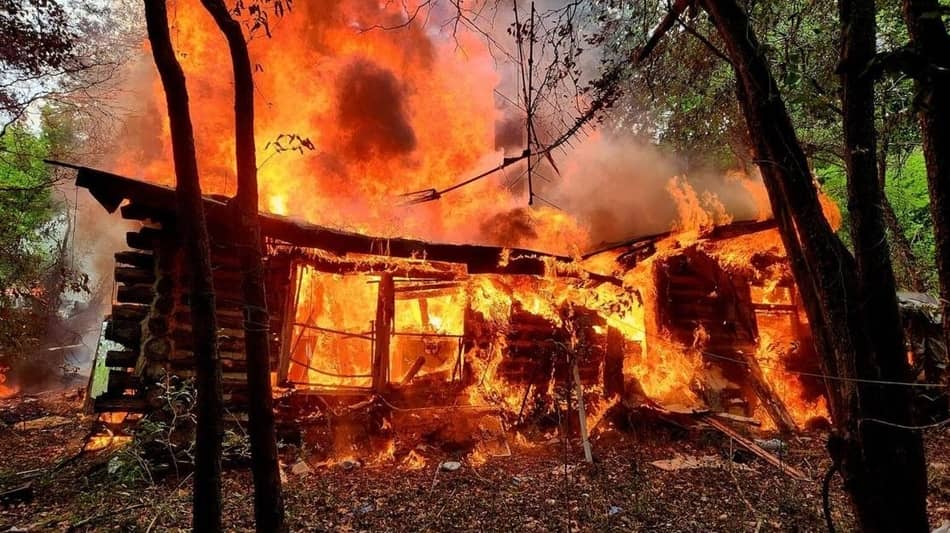
Some people think that log cabins will catch fire much more easily because they are wood-made. But is this true? Before we answer that, we should know that many things play a role here. Actually, log cabins can be safer than a lot of regular house structures. In this article, we’ll talk about that. So, let’s start!
Are Log Cabins Prone to Fire? A classic log cabin design is less likely to catch fire compared to a traditional drywall house. Despite being made of wood, log cabins are not especially prone to fire. Their thick logs have a lower surface area than their volume, making them harder to ignite.
Massive wood is quite good at resisting fire, sometimes even better than pillars made of concrete or steel. Wood naturally has around 15% water in it. So, all that water must dry up first for the wood to start burning. If there’s a fire, a big log cabin might get some burn marks on it, but it won’t fall apart like houses built from lighter materials or steel. However, the log cabin will burn like a normal house if it is a big fire.
Table of Contents
Log Cabins Already Provide an Extra Layer of Protection
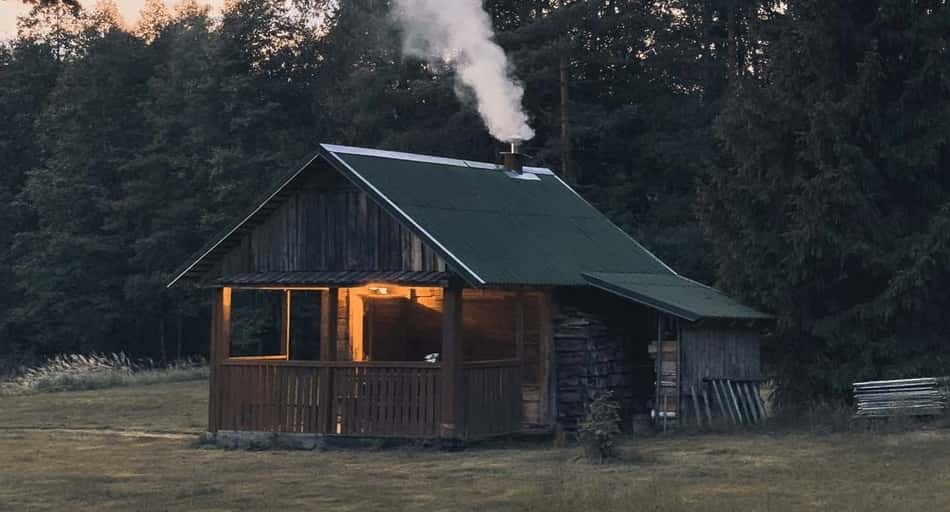
Did you know log homes are very fire-resistant? Some research points out that certain kinds of wood in log homes can resist fires better than others. Here are some facts: Unlike regular houses made from thin wooden pieces, log homes are built with big logs stacked on top of each other. Between these logs, there’s a special seal called “chinking.”
So, when there’s a fire, these walls act more like a thick wooden beam rather than just plain wood. This means fires have a hard time burning them. In simple terms, the big logs used in these homes don’t catch fire as easily.
If you’re thinking about living in a log home, you should definitely look into how fire-safe it is. This means checking out the kind of wood from which the log cabin is made, the size of the logs, and other details. Knowing this can help when building your log home and keep it safer from wildfires.
Related Article: Can You Get Cigarette Smoke Out of Log Cabin?
Why Log Homes are More Fire-Resistant Than Regular Homes?
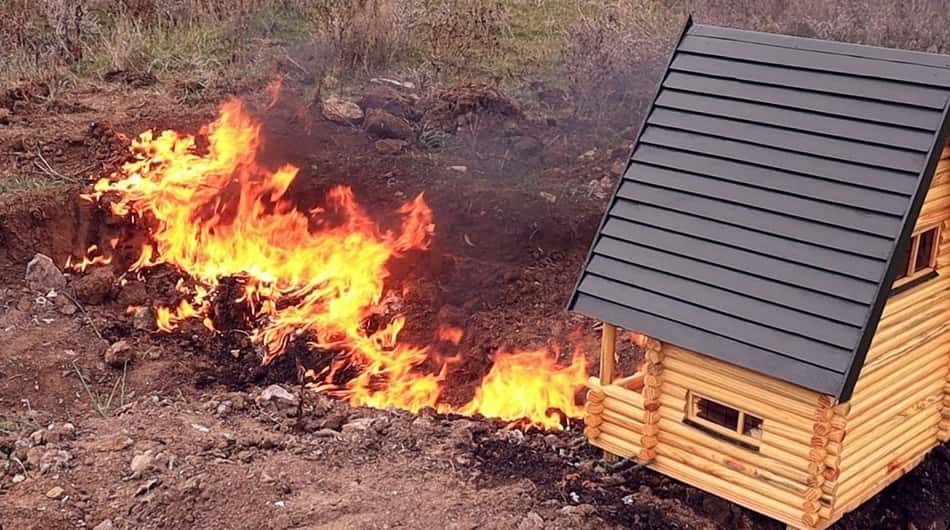
Even though they’re made of wood, the big logs in log cabins aren’t quick to catch fire. Here’s why:
- Size matters. Big logs have a lower surface area compared to their volume. Simply put, only a tiny part of the log faces any fire or heat. But in regular homes with thin wood boards, there’s more wood surface for the fire to reach, so they burn faster.
- Burned wood protects. If a log gets some burn marks or chars on the outside, it acts like a protective jacket. This charred layer stops more heat from getting in. And even if it looks a bit burned, the log is still strong inside.
- Less air, less fire. Log cabins have thick walls, which means less air from inside can get out, and less air from outside can get in. Fire needs air to grow. So, less air means the fire can’t spread as fast.
- Fewer gaps mean fewer flames. Those big logs fit tightly together, so the cabin is sealed well. Think of it like a puzzle, with all the pieces fitting perfectly. This makes it hard for heated or cold air and fire to sneak through any gaps.
- Log homes have a strong structure. Those big logs that make the walls are super sturdy. So, even if some logs get hurt by fire, the whole house won’t just fall down.
So, next time someone wonders if log cabins are safe from fires, you’ve got some cool facts to share!
Keeping Log Cabins Extra Safe From Fires
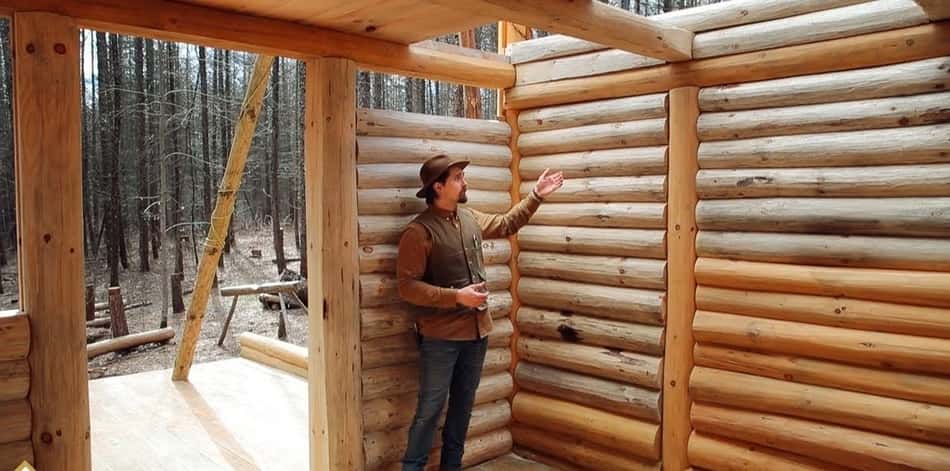
Log cabins are already quite tough when it comes to resisting fire. But you can do a few more things to ensure they’re even safer.
- Clean log cabin chimney. If stuff gets stuck in your chimney, it can easily catch fire. Always make sure it’s clean!
- Discard debris. Dry leaves on your roof or around your house can easily start a fire. Keep an eye out and clear them away.
- Watch out for tree branches. If tree branches hang too low near your home, they can catch fire and spread to your house. Also, if trees are super close to your home, that could be risky.
- Use materials that don’t like fire. There are special materials for parts of your home, like the seal between logs (chinking) or roofing, that don’t burn easily. Using these can help reduce the chances of a fire spreading.
Remember, log cabins are already safer than many other homes regarding fires. But with these extra steps, you can make them even safer!
Protect Your Log Cabin From Fire
One of the best ways to keep your log cabin safe from wildfires is by cleaning up the space around it. Get rid of stuff that can easily catch fire, like dry leaves, small sticks, and needles. Clean your yard, the roof, and even those gutters.
Note! Don’t keep your stack of firewood close to your home, especially not on your porch or deck. It’s best to have that wood pile at least 30 feet from the log house.
Here’s why: Even if a big fire isn’t near your home, tiny flying sparks can still set things on fire. These sparks can land on the dry stuff around your log home and start a fire that can spread to your cabin. So, it’s super important to clean up around your home often. That way, you’ll be ready and safe from any sneaky sparks!
Keep Certain Trees Away From Your Log Cabin
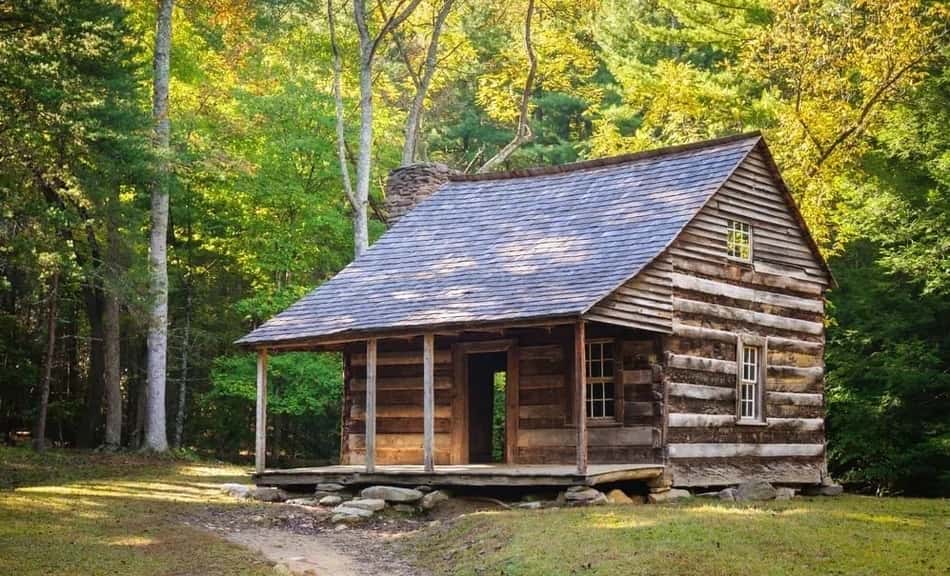
If you’re considering adding some greenery within 30 feet of your log cabin, be careful about which trees you choose. Trees like maple, hickory, and oak are harder to catch fire, so they’re generally okay to have nearby. Just make sure their branches aren’t hanging too close to any buildings.
However, trees like spruce, fir, and especially pine can easily catch fire when they’re dry. Why? Pine trees drop lots of needles, have sticky sap, and branches that hang low. Plus, they keep some old, dry needles and have thick bunches of leaves. All these things make them catch fire easily.
Also, watch out for tall grass around your log home. Some places even have rules against letting grass grow too close to log houses. If you do have grass near your home, keep it short so it’s less likely to catch fire.
Why Is It Hard to Get Insurance for Log Cabins?
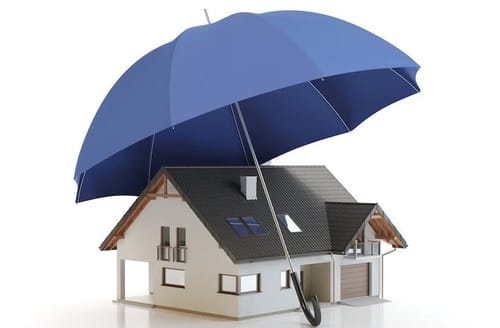
Big insurance companies like to play it safe. They mostly insure homes in big cities because it’s like everyone chips in together to cover the costs if something goes wrong. These big companies often skip abandoned places such as log cabins because there aren’t enough homes to share the risk. That’s how they make sure they always have enough money.
Now, some insurance companies do cover homes in quieter, country areas. But they might only do it if the area has a fire department nearby. Some might say, “Okay, we’ll insure your home, but you’ve got to follow these rules to keep it safe.” But others straight up say, “No way! We’re not insuring log homes or any house that uses wood for heating.”
Related Article: Can Bear Break Into A Log Cabin? Explained
FAQ: People Also Ask
What is the life of a log cabin?
Log cabins are super strong and can handle some pretty tough weather. On average, they can stick around for about 60 years. Some really tough ones even stay up for 100 years! But, just like anything else, a log cabin will last longer if you take good care of it.
How do you prevent a fire in a cabin?
Ensure your cabin has optical smoke detectors, similar to those in airplanes. Keep portable fire extinguishers nearby and consider automatic fire systems. Have a fire axe or crowbar, gloves, smoke goggles, and fire blankets for emergencies. Safety first!
Final Thoughts
Log cabins might look like they’d catch fire easily since they’re made of wood, but they’re actually pretty tough against flames. Their thick logs don’t light up as quickly as the thin wood in regular houses. Plus, if you take good care of a log cabin and keep the area around it clean, the chances of a fire are even lower. So, while all homes need fire safety, log cabins are stronger against fires than many people think!
